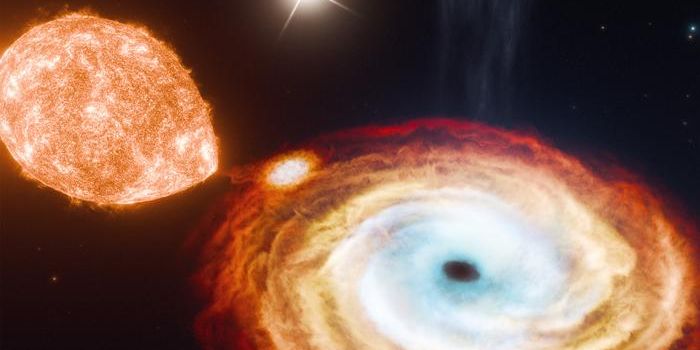Discovery of a New Type of Water Ice
Scientists at University College London and the University of Cambridge have discovered a new type of water ice with the same density as liquid water. A paper outlining their results has been published in the journal Science.
The team of researchers used the process of ball milling to produce this type of ice. During this process, the team vigorously shook ordinary ice together with steel balls in a jar that was super-cooled to -200 degrees Celsius (-328 degrees Fahrenheit). Instead of producing smaller bits of ordinary ice, this process produced a new form of amorphous ice, which is unlike any other ices previously known.
There are 20 known forms of crystalline ice; unlike crystalline ice where molecules are neatly ordered, the molecules in amorphous ice are disorganized. This lack of organization resembles the makeup of liquid water and the density of this new amorphous ice has the same density of liquid water as well.
The team named this new ice “medium-density amorphous ice” or MDA. They chose this name because there are two other types of amorphous ice that have been previously discovered; they are known as high-density and low-density amorphous ices. These two types have a large density gap between them and scientists believed that no other type of ice existed within that density gap, but this newly discovered amorphous ice – MDA – fits exactly within that density gap. MDA most closely resembles liquid water than any other known ices, which may have far-reaching consequences for our understanding of liquid water and its anomalies.
Amorphous ice is rare on Earth, and is only found in the cold, upper regions of the atmosphere. Interestingly, amorphous ice is the main type of ice found in space. In this type of cold environment, ice does not have enough thermal energy to form organized crystals.
The team suggests that MDA may exist inside the ice moons in the outer parts of our Solar System. They believe that the tidal forces created by ice giants (like Jupiter and Saturn) on their moons may exert shear forces on ordinary ice, producing MDA, much like the shear forces created by the process of ball milling.
The team found that when MDA is compressed and then heated, it released a large amount of energy (or heat) as it recrystallized. Thus, MDA can be a high-energy geophysical material that could drive tectonic motions in Solar System bodies composed of ice. As such, it could trigger tectonic motions and “icequakes” in the icy-layer that covers moons such as Ganymede.
Source: phys.org








